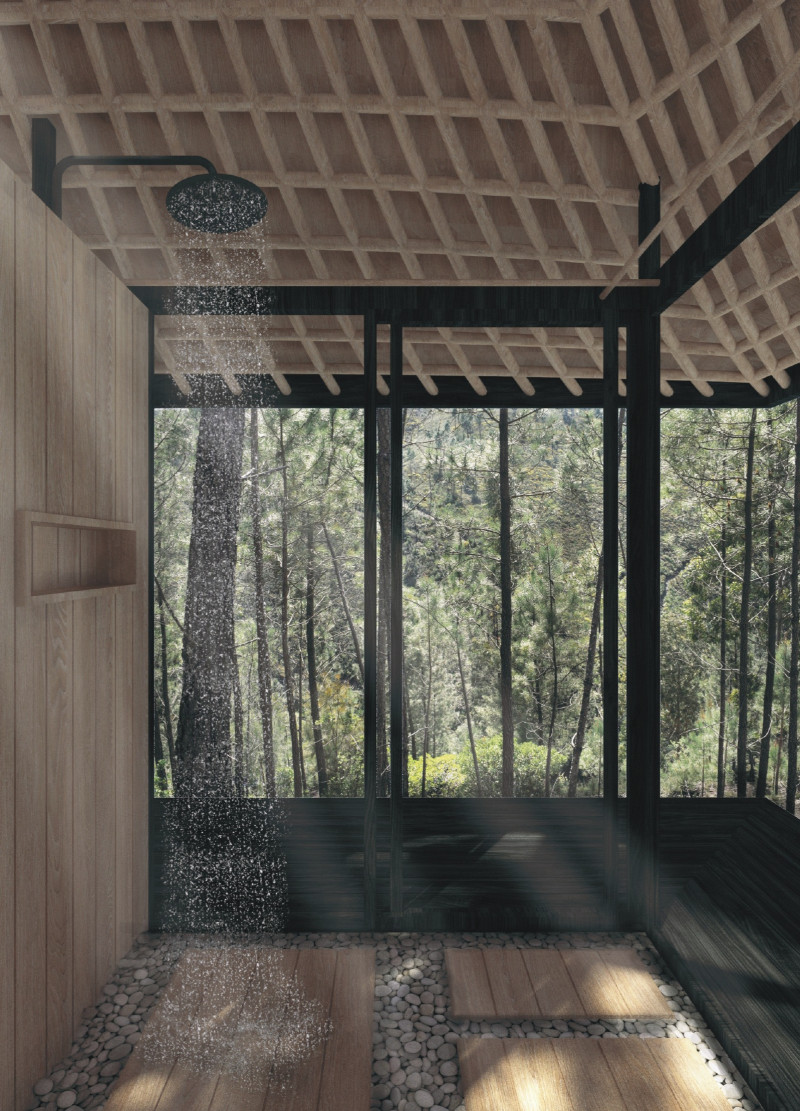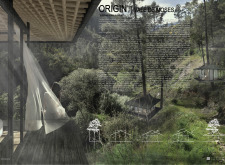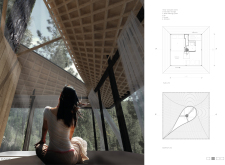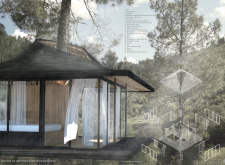5 key facts about this project
Vale de Moses is located in a secluded valley with steep mountain slopes and abundant vegetation, providing a retreat designed for connecting with the natural world. Near the tributary of the River Zezere, the site features several sleeping cabins that promote engagement with the environment. The design concept focuses on the relationship between building and nature, aiming to enhance well-being and emotional health for those who stay there.
Conceptual Integration
The design fosters a close relationship between residents and nature. Sleeping cabins are placed among existing trees, providing privacy while remaining in harmony with the landscape. This strategic arrangement allows visitors to interact directly with their surroundings, preserving the ecosystem as much as possible.
Architectural Form
Cabin designs reflect the natural contours of the site. Their shapes and rooflines echo the landscape, contributing to a unified visual identity. The layout maximizes natural light, especially during sunset, creating a warm atmosphere that connects occupants to the rhythms of nature.
Sustainability Features
Sustainability is a key aspect of the design. The project includes systems for rainwater collection and gray water treatment to encourage careful water management. Natural ventilation methods improve indoor air quality and comfort, reducing reliance on mechanical systems. These features help to limit the overall environmental impact of the project.
Materials and Finishes
Wood is the main material used in the cabins, aligning with the surrounding environment. The exterior wood cladding is treated using the Shou Sugi Ban technique, which increases its durability and decreases maintenance needs. This choice of material not only serves practical functions but also enhances the tranquil aesthetic, helping visitors feel more at home in nature.
Inside the cabins, the design promotes a peaceful atmosphere. Natural light and sounds from the outside come in freely, allowing for a strong connection between indoor and outdoor spaces.






















































